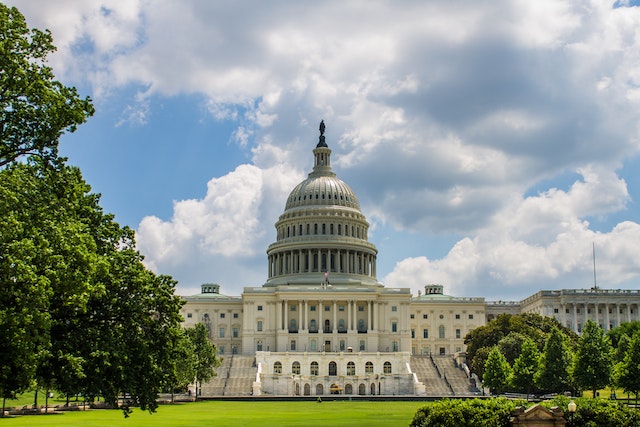Tax-advantaged retirement accounts such as 401(k) plans and IRAs are intended to promote long-term r...

Mar 17, 2023
Why Women Should Invest for Retirement—and Not Just in a 401(k)
Investing in your employer-sponsored retirement plan is an essential part of saving for retirement, but it is only one part of a sound retirement savings strategy. Despite that, fewer than one in five women invest in their employer-sponsored retirement accounts.1 Yet even a 401(k) may not be enough to support you in retirement.2
Women should consider investing for retirement both within and outside of their 401(k) plans for two key reasons: mitigating the retirement savings gender gap and maximizing financial security for the long term.
The Retirement Savings Gender Gap
Women are more likely to run out of savings in retirement than men, and the retirement savings gender gap is one part of the problem. Research shows that women save about 30% less than men do for retirement—yet women have longer lifespans than men, meaning your money needs to last!3
Factors like the wage gap and time taken out of the workforce for caregiving affect women’s ability to save and invest for retirement, worsening the gap in retirement savings between men and women.
However, many retirement savings options exist, and even small investments add up over time. Here are some retirement investment options women should consider.
Benefits and Limitations of 401(k) Plans for Women
An employer-sponsored retirement plan like a 401(k) has benefits and limitations.
One significant advantage of investing in a 401(k) is that you can set up automatic contributions straight from your paycheck. Contributions to your 401(k) can also be a benefit at tax time because they’re taken pre-tax. Some employers also offer contribution matches—you get free retirement money!
However, 401(k) plans also have drawbacks. 401(k)s offer less flexibility in investment options: you can only put money into the funds the plan offers, and the fees and expense ratios aren’t always ideal.
Additionally, if you move to a job without a 401(k) option, you can’t continue making contributions, which can slow your progress toward a fully funded retirement.
Retirement Investment Options Outside of a 401(k)
Fortunately, women have other options for retirement investments. There are three main options: IRAs, HSA, and taxable accounts.
IRAs
An individual retirement account (IRA) has two forms: traditional and Roth. An IRA is a tax-advantaged account that operates much like a 401(k): you cannot withdraw money without penalty before you turn 59½. IRAs are not employer-sponsored and have lower contribution limits.
Why Women Should Invest in an IRA
IRAs offer significantly greater investment flexibility than 401(k) plans. If you’re already maxing out your 401(k) ($22,500 in 2023), you can contribute additional money toward retirement in an IRA.4 In 2023, you can invest another $6,500 toward retirement in a traditional IRA.5 Note that Roth IRA contribution limits depend on your income.
HSAs
A health savings account (HSA) is a pre-tax savings account where you can save and invest money for qualified medical expenses. Recent research found that retirees spend over $20,000 in health care costs every year, on average.6 Starting to save for medical expenses now is crucial for women, who can expect to live longer than men.
Why Women Should Contribute to an HSA
Not only do HSAs provide peace of mind, but they also offer a triple tax advantage—a rare benefit. The money you contribute to an HSA is tax-free, grows tax-free, and stays tax-free if spent on qualified medical expenses!
HSA contribution limits depend on whether you have individual or family coverage. In 2023, an individual can contribute $3,850; family contribution limits are $7,750.7
Taxable Brokerage Accounts
A taxable brokerage account lets you buy and sell investments like stocks, bonds, index funds, and exchange traded funds (ETFs). The money you earn through increases in investment value, dividends, or interest is taxed.
Why Women Should Invest in Taxable Brokerage Accounts
Taxable accounts have no tax benefits, unlike IRAs and HSAs—but they also have no contribution limits. If you have money to invest, you can invest it! Brokerage accounts also offer the most significant investment flexibility: you can pick and choose from various brokerage firms and funds that keep your fees low.
Additionally, money in a taxable brokerage account is more accessible than money in an IRA or HSA. You can withdraw money at any time for any purpose. Once you have maxed out your other investment options, a taxable brokerage account is a great place to start saving for retirement!
Get Investing!
Investing within and outside your workplace plan is vital to maximizing your retirement contributions and savings potential. Using alternative retirement savings options like IRAs, HSAs, and taxable accounts means more women can reach their retirement savings goals and close the retirement savings gender gap.
Prepared by a third-party.
1. Olya, G.. (2023, Mar. 3). "Fewer Than 1 in 5 Women Is Saving in a Workplace Retirement Account: Why That’s a Mistake." https://www.yahoo.com/lifestyle/fewer-1-5-women-saving-160007493.html
2. Maverick, J. (2023, Mar. 16). "Reasons Your 401(k) Is Not Enough for Retirement." https://www.investopedia.com/articles/personal-finance/081315/3-reasons-your-401k-not-enough-retirement.asp
3. McCarty Carino, M. (2022, Dec. 27). "Reforms in latest spending bill could help close gender gap in retirement savings." https://www.marketplace.org/2022/12/27/spending-bill-reforms-retirement-savings-gender-gap/
4. IRS. (2022, Oct. 21). "401(k) limit increases to $22,500 for 2023, IRA limit rises to $6,500." https://www.irs.gov/newsroom/401k-limit-increases-to-22500-for-2023-ira-limit-rises-to-6500
5. IRS. (2022, Dec. 21). "Retirement Topics - IRA Contribution Limits." https://www.irs.gov/retirement-plans/plan-participant-employee/retirement-topics-ira-contribution-limits#:~:text=For%202023%2C%20the%20total%20contributions,taxable%20compensation%20for%20the%20year
6. White, M. (2022, Sept. 6). "Health Care Expenses in Retirement Average $67,000 — Even With Medicare Coverage." https://money.com/health-care-expenses-retirement-average-67k-medicare/
7. Miller, S. (2022, Apr. 29). "IRS Announces Spike in 2023 Limits for HSAs and High-Deductible Health Plans." https://www.shrm.org/resourcesandtools/hr-topics/benefits/pages/2023-irs-contribution-limits-for-hsas-and-high-deductibel-health-plans.aspx
You may also like
Jan 8, 2024
Employer-sponsored retirement savings plans, such as 401(k), 403(b), and 457 plans, present an ideal...
May 27, 2021
If you lose a job, switch employers, or step into retirement, you might consider rolling your retire...








